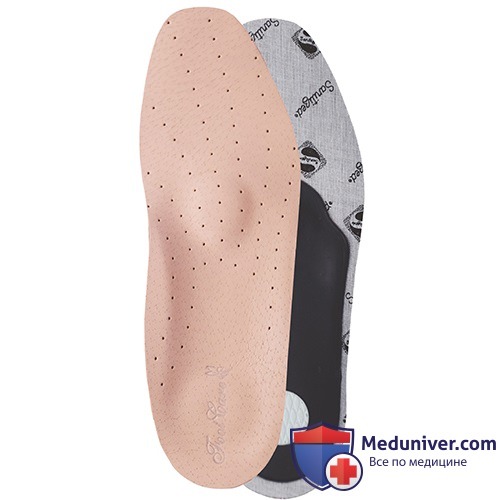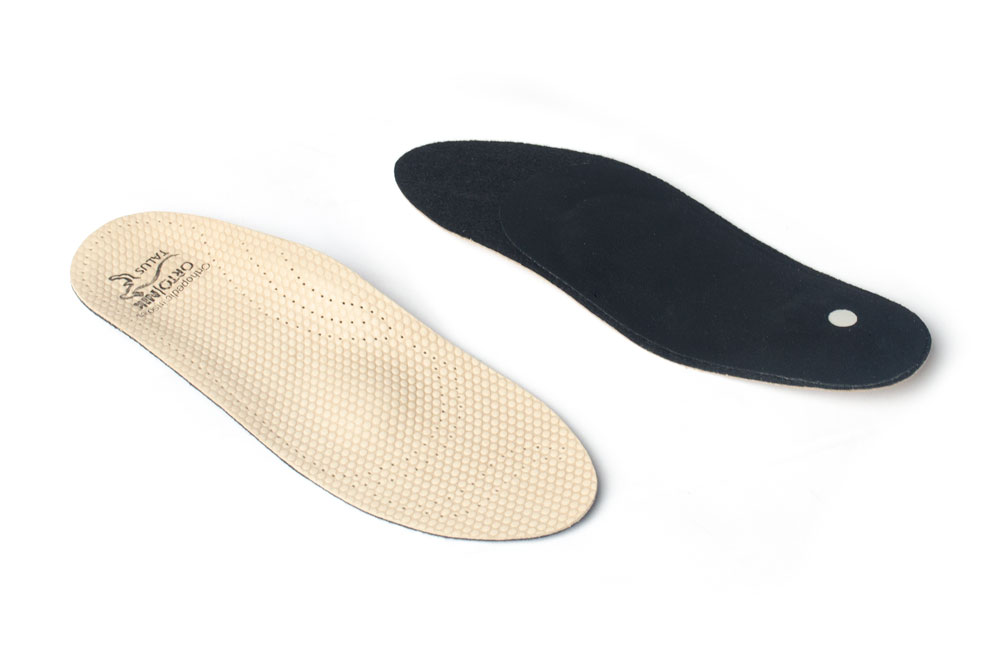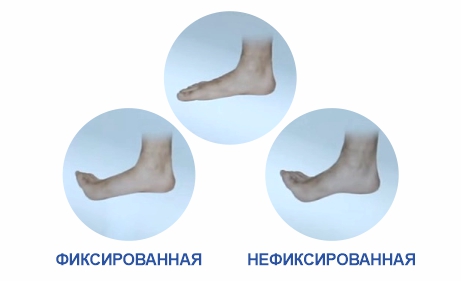Orthoses are made from synthetic and natural materials.

- Orthotics: why and what are they used for?
- Features of the anatomical insoles
- Custom-made orthoses solve several problems at the same time
- The stages of making custom insoles
- How do I choose orthotics for valgus deformities?
- How to choose orthopedic insoles?
- Custom insoles
- Indications for the use of orthoses
- For whom is it useful to wear orthoses?
- Benefits of orthoses
- Shaped:
- Construction:
- When hard deposits work:
- Manufacturer's guarantee
- Why the right foot shape is important for health
- Orthoses: what they are for and what they are good for
- High-quality orthopedic insoles meet the following requirements:
- Production method.
- The four principles of individual insole coverage
Orthotics: why and what are they used for?
Due to our busy lifestyles, we are on our feet most of the day. We walk a lot, go for a morning run, go to the gym or have to stand all day at work. What are the consequences of this extra load on the feet?
The foot is a natural barrier that absorbs shock and impact when walking and running. His health affects the entire musculoskeletal system and other organs. If the load is not evenly distributed, fatigue and discomfort will result.
Orthoses are there to solve this problem. They relieve pain in the feet, shins, hips and knees and reduce fatigue after an active day and long walks. Orthoses can be worn with all shoes and make you forget the discomfort forever. They are also much less expensive than orthopedic shoes.
Although anatomical insoles are mostly recommended for people with musculoskeletal disorders, they are an excellent preventive measure. It is worth looking at the different variants and features.
Features of the anatomical insoles
Externally, anatomical insoles do not differ from normal insoles. Their main difference is the use of natural and synthetic materials that have orthopedic properties. Thanks to these properties, orthotics can treat flat feet, evenly distribute the load, reduce swelling and improve gait.
How do they differ from conventional models? Because they are mainly made from inferior materials, their use can be seriously harmful, especially when the symptoms of a foot impairment are already present. To avoid aggravating the problem, patients should be advised to wear pads.
Wolsmart offers orthotics in wholesale quantities for orthopedic salons, private clinics and medical centers. Working with us, you can offer your customers the highest quality products.

Custom-made orthoses solve several problems at the same time
- Correction of the height of longitudinal and transverse vaults;
- compensate for shortening of the lower limbs by up to 2 cm;
- pressure relief in the heel area;
- reduce the load on the spine and joints;
- Relief from fatigue caused by standing for long periods.
An orthopedic technician will make the insoles you need in half an hour in shops a stone's throw from the meter.
The choice of sizes is unlimited: 34 to 47 for adults and 20 to 35 for children.
The stages of making custom insoles
Insoles are manufactured in the LADOMED foot orthopedic laboratory. All production steps are carried out by orthopedic trauma surgeons. For more information, please call +7 (800) 100-99-19.
1. Examination of the foot. Measurement of the parameters of the foot using a special device - the plantograph.
2. Foot impression in orthopedic foam. Full consideration of the anatomy of the foot. 4.
Treatment and correction of impressions with special tools. 4.
Production of the individual frame by annealing and deep drawing.
6. the final assembly of the insole.
How do I choose orthotics for valgus deformities?
- insoles for children. Valgus deformity in children requires high-cut shoes with an orthopedic insole. The malleable young bones, held in place by shoes and insoles, straighten over time. The complex of support measures also includes therapeutic exercises, massages and swimming.
- insoles for women. Is made to individual measurements and is suitable for permanent wear after surgical interventions. It has high supination, supports the heel of the foot in the correct position and distributes the pressure of the entire surface of the foot on the ground.
- Soft supination shoes that slightly squeeze the toes have a prophylactic effect, while hard supination shoes have a corrective effect;
- Supine shoes should fit snugly on the foot (especially in children) so that the piece supports the correct part of the foot without deviation.
How to choose orthopedic insoles?
Each orthopedist will choose the right insoles based on your specific circumstances and physical characteristics. Don't hesitate to ask your doctor.
If your feet do not yet have head or spine problems, and this is a preventive measure, then a successful purchase is destined for someone who listens to the advice of a salesman in a pharmacy or specialty store. Properly fitted insoles already have a measurable effect in the first few days. You'll likely experience the invaluable sensation of a light (and even swaying) gait on routine walks.
Valgus foot deformity also occurs in children. It looks like a slightly turned-out heel. This condition is usually associated with flat feet, has completely different causes than in women and is treated early and effectively.
Orthotics are a common part of the treatment and rehabilitation process for all sufferers, but only a doctor knows how to choose sensible footwear.
There is no 'home recipe' for determining the size of an insole and choosing the best option - this is only determined in the doctor's office as part of a specific diagnosis.
The benefit of something as small as a shoe insert can be priceless. We may not be aware that the fresh and vital look of our friends, who from time to time surprise us with their fitness, is a pleasant result of choosing the right insoles at the right time.

- Take advantage of the free bonuses
- Sending SMS
Custom insoles
You can make an appointment online or by calling Moscow 8(915)365-55-05.
Orthotics are made based on the person's problem. Factory-made orthoses (from the pharmacy) do not take these properties into account. They are made according to a standard model and can often only do harm.
Orthotics are made by a certified technician. The quality of the insoles determines their functionality, which is why only proven specialists work for us.

When making insoles, we take into account the individual deviation of the right and left foot, the presence of complications, body weight, the condition of the spine and other features of the body.
We use natural leather and modern materials in production. Hypoallergenic and reliable, they last at least 6 months!
Indications for the use of orthoses




The foot has several functions. The primary is the support function (when standing, walking), another is the cushioning function. The foot carries loads when walking, running, and standing. When a foot deformity develops, it transfers that load and travels further up - to the hips, the knees, the lumbosacral spine. The task of the orthoses is to relieve the feet and other parts of the musculoskeletal system. These are mainly the legs, the lumbar spine and the lower thoracic spine.
For whom is it useful to wear orthoses?
Originally, special pressure-relieving insoles for shoes were only used to treat diseases of the musculoskeletal system. Today, they are highly recommended for all people who lead an active lifestyle, are regularly physically active, have to work mostly standing, and women who wear high-heeled shoes.
All of these conditions can overload our feet and cause severe damage to the entire musculoskeletal system, leading to foot deformities and premature joint wear.
Some of the most common unpleasant consequences are:
- flattening of the longitudinal and transverse arches of the foot, developing into flatotopia;
- valgus deformity,
- heel spur,
- hammer toe,
- limb fractures, etc.
Orthotics are designed to help prevent these abnormalities, and when they're already in place, they can help relieve pain and discomfort.
In addition, properly fitted insoles can help restore the foot's normal structure.
Benefits of orthoses
The use of orthotics can have many positive effects, provided the orthotics are chosen by a specialist and all medical recommendations are followed.
The main advantage of orthoses is their prophylactic effect, which helps the feet withstand excessive loads and protects them from possible anomalies. However, if a pathology is already present and causing discomfort, orthoses have another function: they slow down the progression of the disease, repair and correct the foot, and help relieve pain.
The benefits of insoles include the following therapeutic effects:
- They create comfortable conditions when walking and standing in an upright position for a long time.
- They relieve pain from heel spurs, transverse and longitudinal flatfoot and other diseases.
- They distribute the load evenly over the entire surface of the foot and take it away from overly stressed areas.
- Helps prevent corns and blisters.
- Reduces shock loading during movement and increases cushioning.
- Fixes the anatomically correct position of the transverse and longitudinal arches.
- Supports posture.
- Protects weakened ankle ligaments in the elderly.
- Reduce the risk of injury during physical activity.
Shaped:
- Full length insoles. These are insoles for closed shoes. They are full length from toe to heel.
- Half insoles. These are products for open shoes or shoes with a narrow toe box that a full size insole would not fit. They are shorter than insoles but have a similar effect.
- The insoles are placed under the forefoot and support the transverse arch. A good option for narrow shoes and corns.
- Padded soles. They are used in shoes in the area under the heel; they are good for heel spur pain relief, heel pain relief and back problems for spine relief.
- The summer insoles are made of breathable materials so that the skin can breathe. In addition, the surface of these insoles perfectly absorbs sweat, which is more actively produced in summer than in other seasons.
- demi-seasonal - thanks to their heat-retaining coating, they retain heat and absorb moisture. Protects feet from getting wet in rainy weather.
- Winter - made from materials like felt and wool to keep you warm in winter.
Construction:

- Rigid or frame.
When you touch this type of insole, you will feel that it is firm, especially in the midfoot and rearfoot area. That's because it has a frame inside that's made of dense materials. Thanks to this robust construction, various foot complaints can be effectively corrected or prevented with frame insoles. The frame supports the lowered longitudinal arches and does not deform under load.
When hard deposits work:
Despite the somewhat intimidating name, because typically all 'rigid' orthotics are used for serious injuries, rigid frame orthotics are the most commonly prescribed and used:
- for longitudinal, transverse and combined flat feet grade 1 and 2: for treatment and prevention,
- for foot pain, overexertion due to sports activities or long walks,
- with hallux valgus,
- for joint and spine problems,
- in case of pregnancy,
- vein problems.
The fixation test can be performed at home. Stand so that you can see the side of your foot. Then, without removing your foot from the cradle, lift your toes. If the longitudinal arch (the transverse arch on the side of the foot) has risen, the deformity is not fixed. If the arch of the foot does not elevate and remains flat, it is a fixed deformity.

To determine if it is a fixed or non-fixed deformity, you need to see a specialist.
Manufacturer's guarantee

The warranty period for insoles, half soles, orthoses, slippers and braces for forefoot problems is 50 days.
The guarantee is valid from the date of issue of the product and a copy of the receipt. Within this period, Persei Ortho will repair or replace, free of charge, any product that fails prematurely through no fault of the consumer.
Prophylactic orthopedic insoles can be purchased at the Persei Ortho store in Moscow. Custom manufacturing of therapeutic insoles and other products. After prior consultation and examination by an orthopedic doctor.
In addition, the basic equipment of Perseus Ortho orthopedic shoes includes spacer shoe inserts.
If you have any questions, please contact us on our numerous telephone numbers: 7 (495) 469-99-05
Why the right foot shape is important for health

Healthy feet carry the brunt of the movement and protect the spine, leg joints and brain.
The arch of the foot solves the problem of cushioning. When walking, jumping or running, the impact load is distributed between the foot and the ground in such a way that the foot can absorb most of the shock wave and soften the force of the impact on the body with each step.
An underdeveloped foot is not able to absorb this load. This causes the shock wave to propagate to the ankle, knee, and hip joints, and then to the spine. Due to this increased load, there is a risk of pain, rapid fatigue, joint and spinal problems and circulatory disorders.
Orthoses: what they are for and what they are good for

Orthoses are an effective method of treating flat feet and are a reliable help in solving the problems associated with them.
Orthoses support the transverse and longitudinal arches of the foot. This is their main function. Correct positioning of the arches of the feet improves blood circulation. The blood circulates normally and premature fatigue of the foot is avoided. The foot, which is in its physiologically natural state, 'functions' correctly: it cushions the pressure when standing and moving. Thanks to the insoles, the musculoskeletal system is only put under as much strain as it can absorb. Therefore, there is no risk of various diseases of the spine and joints.
High-quality orthopedic insoles meet the following requirements:
♦ Memopur – with memory function: the insole adjusts itself and returns to its original shape every time the shoe is removed, so the product can be used for a long time;
Includes not only a longitudinal arch sockliner, but also a transverse arch metatarsal roller and heel shock absorber;
♦ with a springy perforated frame: the product ensures a harmonious unrolling of the foot during physical activity;
contains silver ions that prevent the growth of bacteria and odor;
EASY CARE: Most high quality orthotics are machine washable.
Production method.
There are two technologies for making custom insoles: Russian – 'Sursil-Orto' and German – Igli. The main difference lies in the manufacturing process and the materials used.
The process of making an insole in any technology begins with a consultation with a specialist. A thorough examination of the feet is carried out with the help of a plantoscope or computer diagnostics.
The resulting meaningful picture of the condition of the feet is supplemented with information about the preferred footwear, the anatomical features of the body, the level of exercise and the lifestyle of the person.
With Sursil Ortho technology, the insole is made of a thermoplastic material. After curing, this material forms a rigid base. Such insoles are especially recommended for severely deformed feet or for people recovering from an operation.
The manufacture of the insoles begins with the adaptation of the necessary foot pads - special insoles that support the arch of the foot - to the longitudinal and transverse arch. During this process, the changes in the foot are still examined with the plantoscope. This procedure is necessary in order to select the volume and location of deposits on the future deposit.
The base of the insole is then removed from the thermoplastic and heated. The material quickly reaches a soft state. The heated pad and insoles are placed under the patient's foot and fixed in place to allow the plastic to harden.
The specialist then places the patient on the prepared pad. The doctor checks the position of the ankles. Based on this, the heel cups are selected to align the joints. The heel cups attach to the heel portion of the insole. The patient tries on the finished product.
Now the time to adjust the feet to the insoles begins. This lasts about a week. During this time, it is normal to feel some discomfort in the insole when walking. If pain occurs, you should have an insole fitted.
Igli technology uses a flexible carbon backing and elastic secondary inserts. Igli insoles are called trainers. The posts and carbon fibers do not interfere with the biomechanics of the foot - the muscles actively participate in the movement.
The four principles of individual insole coverage
Taking care of insoles can significantly extend their lifespan.
Four rules for handling custom insoles will help ensure they stay useful for a long time.
1. In order to avoid deformation of the product, do not wash the insoles in the washing machine or in hot water, and do not tumble dry or near heating appliances.
2. Ventilate and clean the polymer part of the insole every day at the end of the day with a damp cloth. 3.
3. Do not use solvents containing acetone to clean the insoles.
4. The product should be stored at room temperature, away from heaters and away from direct sunlight.
Post your questions about custom insoles on the Ortix Social Communities. Get advice on the general toll-free number or request a callback service.

Head of the Ortix training center, specialist in orthopedic technology, general practitioner
Read more:- Transverse orthopedic insoles.
- orthopedic insoles.
- Insoles are suitable for.
- Manufacture of orthopedic insoles for children.
- Custom insoles.
- Equipment for manufacturing orthopedic insoles.
- Insoles for valgus in adults.
- Personalized media inserts.
